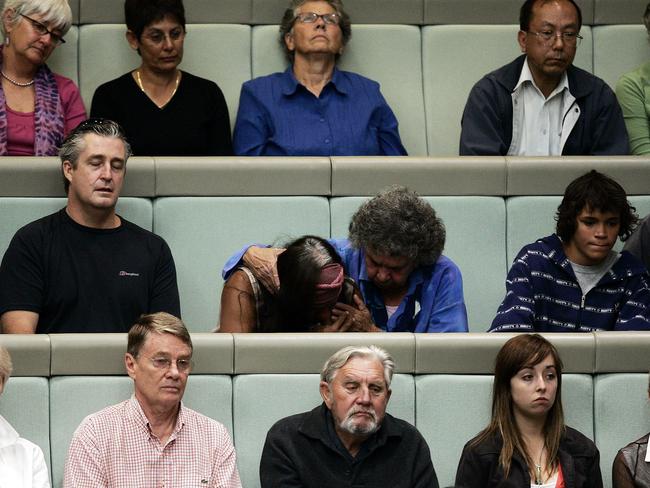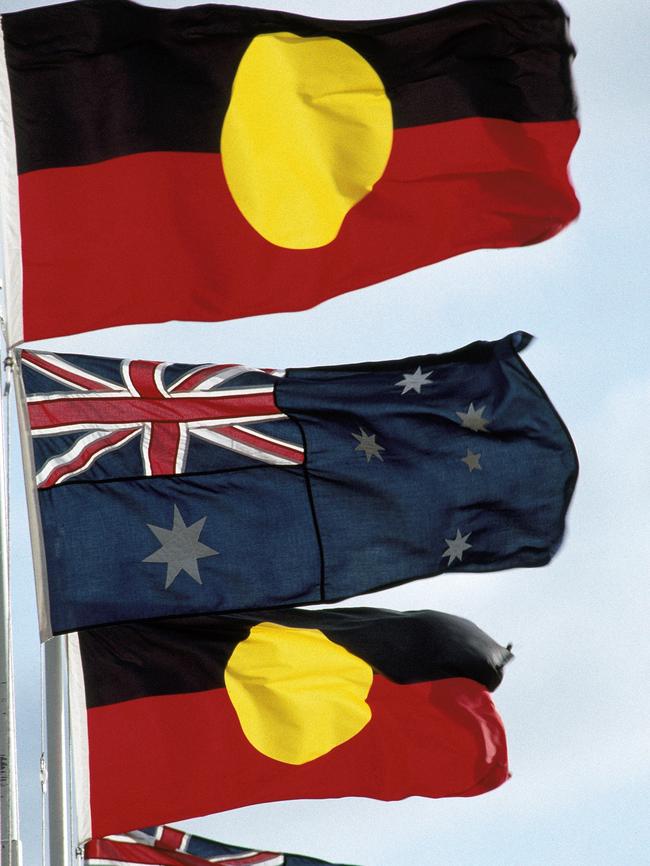Piers Akerman: Why the Closing The Gap campaign is not working
NEXT month marks the 10th anniversary of Kevin Rudd’s teary apology to the so-called Stolen Generation. This year will also see the 10th Closing The Gap report delivered to parliament but judging by last year’s report, don’t hold your breath, Piers Akerman writes.
Opinion
Don't miss out on the headlines from Opinion. Followed categories will be added to My News.
NEXT month marks the 10th anniversary of Kevin Rudd’s teary apology to the so-called Stolen Generation.
Like the rest of the much-touted milestones littering his and his assassin Julia Gillard’s dismal legacy, it was a hollow gesture marked by feel-good sentimentality and a huge deficit in any realistic outcomes.
This year will also see the 10th Closing The Gap report delivered to parliament but judging by last year’s report, don’t hold your breath. According to last year’s report, only one of the seven targets of the campaign is on track to be met and four more are due to expire in June with no hope of being achieved.
The Close The Gap campaign is especially concerned the target to halve the gap in child mortality by 2018 is not on track, and that Aboriginal and Torres Strait Islander child mortality did not improve significantly over the period 2008-2015.

“This is not good enough from governments that have committed to close the life expectancy gap by 2030 as a national priority,” the campaign noted, adding “while the campaign has been generally pleased with the statements of ongoing bipartisan support from across the federal parliament supporting closing the gap, words are not enough.
“The recognised necessity and urgency to closing the gap must be backed by action based on meaningful engagement with Aboriginal and Torres Strait Islander people.”
Unfortunately, the record doesn’t support this statement. The history of the Aboriginal industry shows that bodies set up to provide meaningful engagement seem to inevitably succumb to corruption. Last year, in a document portentously titled the Uluru statement, it was suggested an indigenous body be set up to advise parliament on Aboriginal issues as if this would be something of a magic bullet.
While there is major disagreement among those claiming to identify as Aboriginals, this seems like another power grab by an educated elite that has the capacity to create a serious divide not only between those whose claims to be Aboriginal are questionable and others, but also with the broader Australian community.
Apartheid by stealth.

We have already created an unhealthy divide by requiring individuals to identify as Aboriginal or Torres Strait Islanders and streaming big welfare benefits to those who wish to access that pot. We don’t need a special body to service this minority.
A friend who has been reading the Nobel prize-winning economist F.A. Hayek over the Christmas holidays drew my attention to some passages from Hayek’s The Constitution Of Liberty in which he wrote about the adverse consequences of preventing the natural consolidation of the agricultural sector by paying subsidies to small, inefficient farmers to stay on the land.
Hayek wrote: “Such attempts to preserve particular members of the agricultural population by sheltering them against the necessity of changing strong traditions and habits must turn them into permanent wards of government, pensioners living off the rest of the population and lastingly dependent for their livelihood on political decisions. It would certainly be the lesser evil if some remote homesteads disappeared and in some places pastures and even forests replaced what, in different conditions, had been arable land. Indeed, we should be showing more respect for the dignity of man if we allowed certain ways of life to disappear altogether instead of preserving them as specimens of a past age.”

The economist might as well have been describing the prevailing thinking on remote Aboriginal communities.
Taxpayers are currently spending $33.4 billion directly on indigenous Australians. This is an increase of 23.7 per cent since the first expenditure survey when the program began and a figure twice that for non-indigenous Australians.
The estimated total spending per person for Aboriginal and Torres Strait Islander Australians nationwide is $44,886, compared with $22,356 for non-indigenous Australians, according to Productivity Commission figures. The highest per-person rate is in the Northern Territory, at $68,186, and the lowest in Tasmania, $29,602. These figures include expenses attached to all Australians, such as education and health services, as well as indigenous-specific services.
It is clear from the Closing The Gap report that spending twice as much on those who identify as Aboriginal as is spent on other Australians is not providing results. Professor Marcia Langton has pointed out that chronic diseases, particularly those related to diabetes, are rife in remote Central Australian communities and elsewhere.
She has identified a number of problems with the way these vast sums are distributed from the Commonwealth through the states by way on untied grants. The bureaucrats at state, federal and local government levels are failing those they are meant to be serving but so too are the community leaders.
Perhaps the money should be spent on basic services such as clean water and sewerage, or perhaps there should be an honest discussion about the viability of communities where there is no work and no incentive to do anything other than collect welfare cheques.
It will be 20 years in May since the first Sorry Day and really, there is even more to be sorry about. We should not be sorry for giving children, Aboriginal or otherwise, a better shot at life by taking them from abusive or dysfunctional households. We shouldn’t be sorry that those who have been able to find places in boarding schools receive a better education providing them with greater opportunities in life.
We shouldn’t be sorry but we should be angry that benefits are distributed not on the basis of need but on the basis of race in this egalitarian nation.
This is the intrinsic flaw of the multicultural policy.
If we want to see better health, education and employment prospects for Aboriginal Australians we should start treating them as we treat other Australians.



